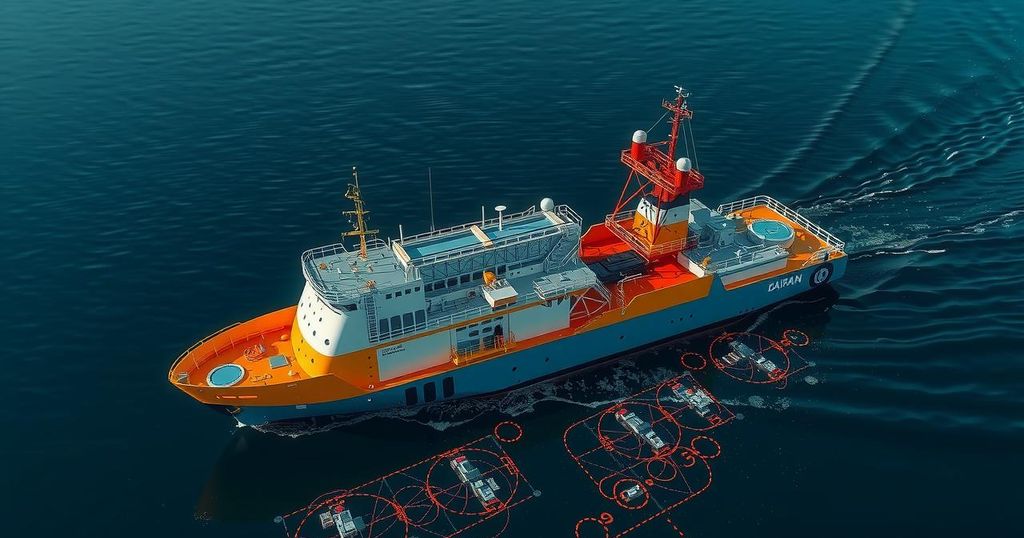Durham Scientist Joins International Team Investigating 2011 Tohoku Earthquake
A Durham scientist is part of an international team aboard the Chikyu vessel investigating the 2011 Tohoku earthquake. This initiative, following earlier research, seeks to explore the geological faults involved in this unprecedented event. The expedition aims to analyze sediment and fault material to improve understanding of the earthquake’s unique characteristics, marking a significant step in global earthquake research.
A scientist from Durham University is participating as part of an international team on the Chikyu deep-sea drilling vessel, focusing on the investigation of the 2011 Tohoku earthquake off Japan’s eastern coastline. This major seismic event, which was one of the largest in recorded history, resulted in widespread devastation including a catastrophic tsunami and significant infrastructure damage, including the meltdown of the Fukushima Daiichi nuclear power plant. The ensuing disasters claimed approximately 18,500 lives and displaced over 160,000 individuals, emphasizing the need for deeper understanding of such seismic events.
The current research, part of the Tracking Tsunamigenic Slip Across the Japan Trench (JTRACK) project, builds upon the previous Japan Trench Fast Drilling Project (JFAST) initiated in 2013. This endeavor aims to analyze the boundary plate fault that was instrumental in the 2011 earthquake. During this four-month expedition, the research team has successfully drilled through various geological layers, reaching the subducting Pacific plate, and has now initiated sampling of deep-sea sediments and fault materials for detailed analysis.
Notably, the Tohoku earthquake defied prior scientific assumptions regarding subduction zones, as it produced an unprecedented fault displacement that reached the ocean floor. Insights gained from sampling the segment of the fault that experienced significant movement during the earthquake may provide crucial knowledge regarding the geological mechanisms responsible for such atypical seismic activity.
Rebecca Robertson represents Durham University as one of three UK scientists involved in this extensive global collaboration, which encompasses participants from Japan, the United States, and Europe, revealing a commitment to advancing earthquake research through international partnerships.
The Tohoku earthquake of 2011 was a pivotal event in modern seismology, leading to significant casualties and resultant damage that triggered a reevaluation of scientific theories regarding tectonic movements. The earthquake’s magnitude and the unprecedented nature of the tsunamis it produced have prompted extensive research aimed at understanding the complex processes involved in earthquake dynamics, particularly in subduction zones. Previous doctrines suggested that shallow portions of these faults did not exhibit rupture, making the 2011 event a crucial case study in the field. Research initiatives like JFAST and JTRACK are vital to elucidate the geophysical properties and processes of these geological phenomena, enhancing disaster preparedness and risk mitigation strategies globally.
In summary, the ongoing research led by the JTRACK project emphasizes the continued need for deeper scientific investigation into the mechanics of significant subduction zone earthquakes, particularly in light of new evidence challenging previously held beliefs. The collaboration between international experts signifies the global importance of earthquake research as a means of enhancing safety and preparedness against similar future events. The contributions of scientists like Rebecca Robertson serve to strengthen the understanding of seismic risks and facilitate improved responses to geological disasters.
Original Source: www.durham.ac.uk




Post Comment